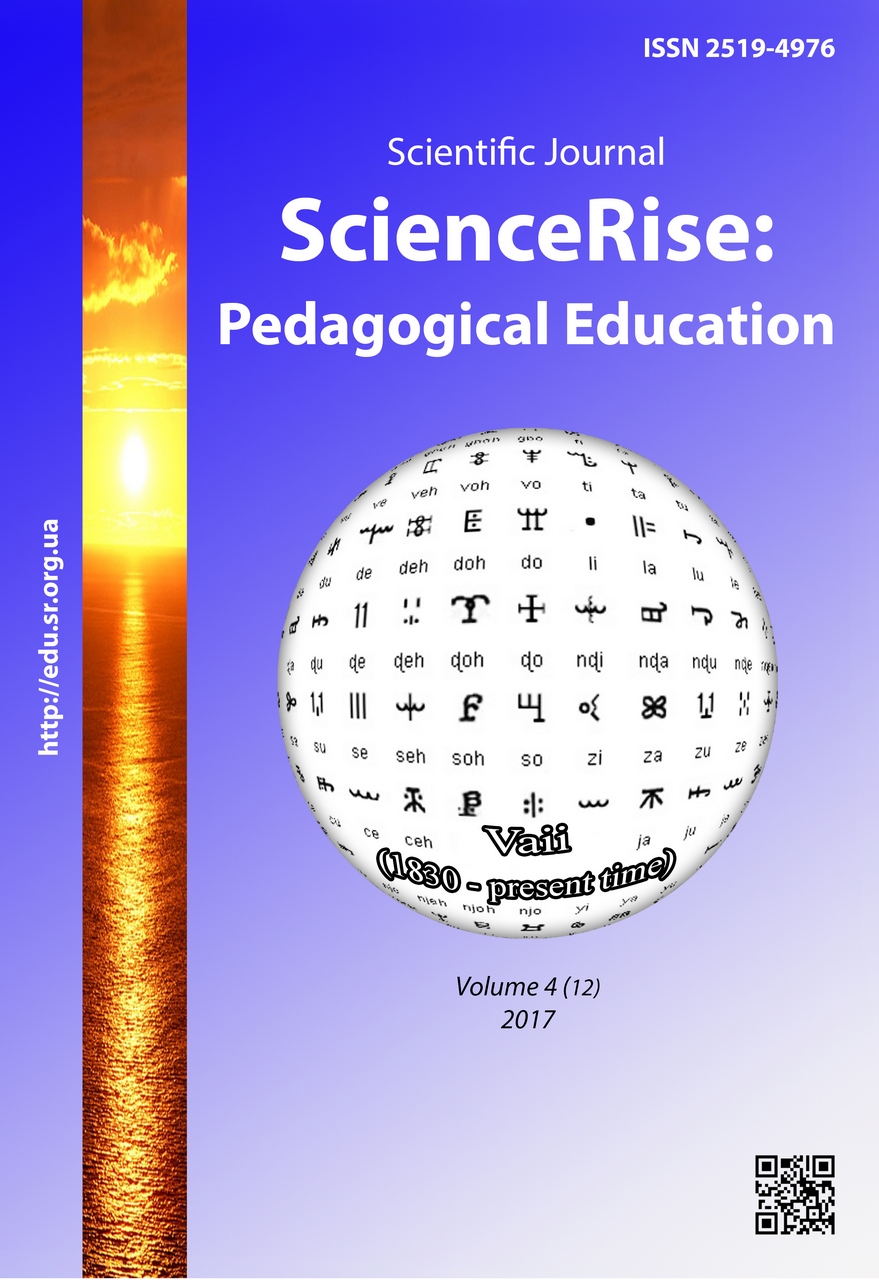Role of interdisciplinary integration in the formation of professional competence in future ecologists
DOI:
https://doi.org/10.15587/2519-4984.2017.100185Keywords:
intradisciplinary connections, integrated study, interdisciplinary connections, monitoring of environment, professional competenceAbstract
At the research there was carried out the generalization of the different classifications of interdisciplinary connections, on which use the professional competence of future ecologists is formed at the study of academic discipline “Monitoring of environment”. This research favors the elaboration of the structural-logic scheme of the process of future ecologists’ training for mastering the polyfunctional professional competences as a result of integrated study. Four main content blocs of interdisciplinary implementation were separated at the structural-logic analysis:
– fundamental (disciplines of the natural-scientific training course);
– evaluative (disciplines that develop mathematical, axiological, qualitological abilities for solving certain ecological problems);
– applied (connections that form the ability to evaluate the influence of harmful factors on environment, to determine and elaborate the arrangements as to protection and saving of natural resources);
– system-modeling (connections that provide the ability to: the use of ecosystem approach for the analysis, diagnostics, prognostication of ecological problems).
The professional competences were specified by the content-thematic models of the natural-scientific and professionally oriented cycles of training in integral study of environment monitoring. In general all existing connections may be referred to the system-modeling ones, because they are aimed at the formation of fundamental-professional-practical competences that favors the solution of complicated, complex ecological problems. The knowledge of professional training are deepened, generalized, gain scientific character due to interdisciplinary integration that favors the introduction of changes to the content of learning programs and their renewalReferences
- Krechetnykov, K. H. (2001). Intehratsyya distsyplin v uchebnom protsesse. Obrazovanie i nauka v tret'em tysyacheletii, 3, 45–52.
- Deminska, L. O. (2004). Mizhdyscyplinarni zv'yazky u procesi profesijnoyi pidgotovky majbutnih uchyteliv fizychnoyi kultury. Donetsk, 245.
- Dzhuryns'kyy, P. B. (2015). Mizhdystsyplinarnyy pidkhid u metodytsi vykladannya sportyvnykh dystsyplin maybutnim fakhivtsyam fizychnoho vykhovannya. Osvitolohichnyy dyskurs, 1, 84–94.
- Goncharenko, S. U. (1999). Problemy integraciyi ta dyferenciaciyi u profesijnij osviti. Pedahohika i psykholohiya profesiynoyi osvity, 1, 23–25.
- Zverev, Y. D., Maksymova, V. N. (1981). Mezhpredmetnie svyazy v sovremennoy shkole. Moscow: Pedahohyka, 158.
- Gadeczkyj, M. V., Hlyebnikova, T. M. (2003). Organizaciya navchalnogo procesu v suchasnij shkoli. Kharkiv: Ranok, 136.
- Ridey, N. M.; Mel'nychuk, D. O. (Ed.) (2011). Stupeneva pidhotovka maybutnikh ekolohiv: teoriya i praktyka. Kherson: Oldi-plyus, 650.
- Khutorskoy, A. V. (2005). Pedahohycheskaya ynnovatyka: metodolohyya, teoryya, praktyka. Moscow: Yzd-vo UNTs DO, 222.
- Bekrenev, A. (1996). Mnohostupenchatie strukturi yntehryrovannikh system obrazovanyya. Vyсshee obrazovanye v Rossyy, 3, 37–50.
- Bordіug, N. S. (2016). Educational, scientific and administrative aspects of environmental monitoring system analysis. ScienceRise, 1 (5 (18)), 4–8. doi: 10.15587/2313-8416.2016.59068
Downloads
Published
How to Cite
Issue
Section
License
Copyright (c) 2017 Natalia Bordіug

This work is licensed under a Creative Commons Attribution 4.0 International License.
Our journal abides by the Creative Commons CC BY copyright rights and permissions for open access journals.
Authors, who are published in this journal, agree to the following conditions:
1. The authors reserve the right to authorship of the work and pass the first publication right of this work to the journal under the terms of a Creative Commons CC BY, which allows others to freely distribute the published research with the obligatory reference to the authors of the original work and the first publication of the work in this journal.
2. The authors have the right to conclude separate supplement agreements that relate to non-exclusive work distribution in the form in which it has been published by the journal (for example, to upload the work to the online storage of the journal or publish it as part of a monograph), provided that the reference to the first publication of the work in this journal is included.








